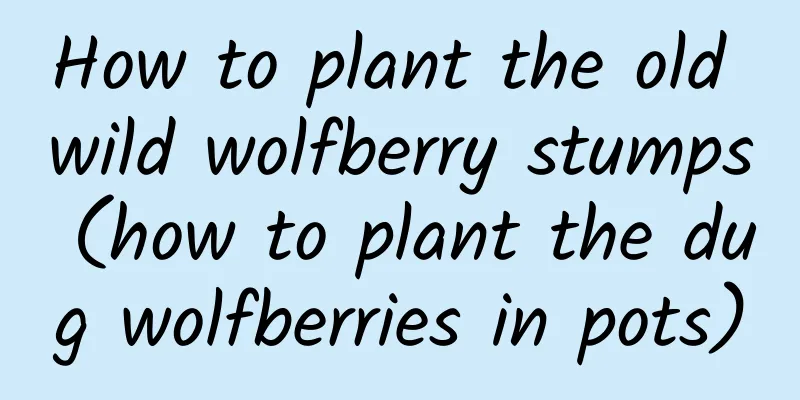Cultivation method of rattan Panax notoginseng

1. Maintenance methods1. Temperature: Panax notoginseng likes warmth. Specifically, the range is preferably between seventeen and twenty-five degrees. It has some cold tolerance, but not very good. It can withstand temperatures as low as zero degrees, but at minus two degrees, its above-ground parts will generally freeze to death or get frostbitten. In addition, above 35 degrees, its growth will be very slow. 2. Light: It does not require too much sunlight and its shade tolerance is very good. Especially in the hot summer, the sunlight must not be too strong. You can put it in a cool place or place with slight scattered light. But it cannot be completely dark during the growth period. 3. Watering: Panax notoginseng has a strong adaptability to water because it is a plant that is very drought-resistant and waterlogged-resistant. Therefore, you can adjust watering according to the climate, water less during the rainy season and add more during drought. 4. Fertilization: Panax notoginseng does not require too much nutrients, as long as there is enough nutrients in the soil. You can add a little organic fertilizer at ordinary times. 2. Breeding techniques1. Reproduction: It can be propagated by stem cuttings. Choose stems that are one year old or older, preferably about 15 centimeters in length and with at least two to three nodes. The substrate can be garden soil with an appropriate amount of base fertilizer added, and the soil thickness can be about ten centimeters. The depth of insertion into the matrix can be four to five centimeters and maintained at a certain interval. Water thoroughly after planting, but don't water too much afterwards. 2. Pruning: When the plant grows to a height of 30 to 40 centimeters, it needs to be pruned to promote the germination of side buds. At the same time, a frame must be built to facilitate it to climb up. 3. Problem diagnosis and treatment1. Disease: The main disease is called "snake eye disease", which is very common throughout the entire growth period and endangers the leaves to a greater extent. Medication can be used in time, and strong light needs to be blocked at the same time. 2. Pests: There are many types of pests, such as "Spodoptera litura", "Beet Armyworm", "Aphids" and so on. For fall armyworms, the department uses Qingyuan water-retaining agent for prevention and control. For aphids, the department uses pyrethrum to control them. IV. Other issues1. Toxicity; it is not only non-toxic, but also a very good medicinal material. 2. Can it be raised at home? Generally not, it is mainly grown as a medicinal herb. |
Recommend
When is the best time to plant strawberry seeds?
Strawberry seed planting time Strawberry is a per...
Cultivation methods and precautions of hairy azalea
1. Maintenance methods 1. Soil: Rhododendron is s...
How to save lettuce seeds
Lettuce Seed Introduction Lettuce has seeds, and ...
100% survival rate, super simple breeding method, you will learn it once you see it!
Layering propagation Layering propagation is to p...
Disease and Pest Control of Magnolia grisea
Pest Control of Gray Manglietia Mole Cricket Mole...
These flowers can easily form a flower wall, and the neighbors will be envious when they see it.
Six times profit panoramic ▼ 1. Sowing: Carry out...
How to grow eggplant on the balcony
Planting season: Eggplant is usually planted from...
Why do people say that large pots are not suitable for growing flowers?
1. Poor breathability It is not easy to grow flow...
Lychee Growing Conditions and Characteristics
Litchi Growth Conditions Lychees are generally mo...
How to breed cherry crystal
Propagation method of division Propagation by div...
Where does hair algae grow? (Pictures of where hair algae grows)
Where does hair algae grow from The scientific na...
How to grow butterfly flower
1. Sandy loam First, you need to choose suitable ...
How to pollinate dragon fruit
1. Time When sowing in spring, the flowers usuall...
How to make acidic soil and what flowers are suitable for planting
1. How to make 1. Bury acidic humus: When making ...
How to change the soil and pot of camellia
Camellia soil and pot requirements Camellia is a ...









